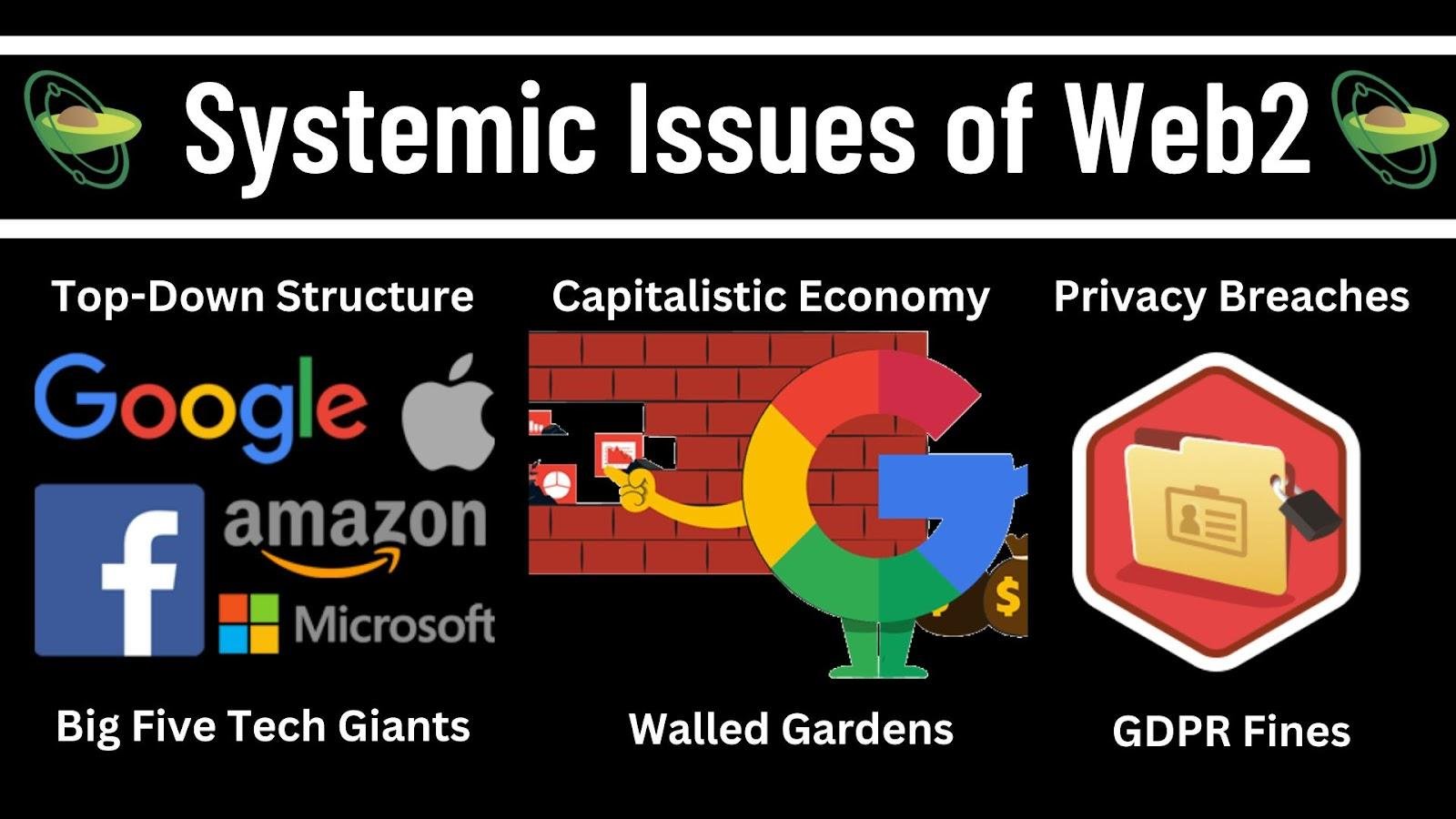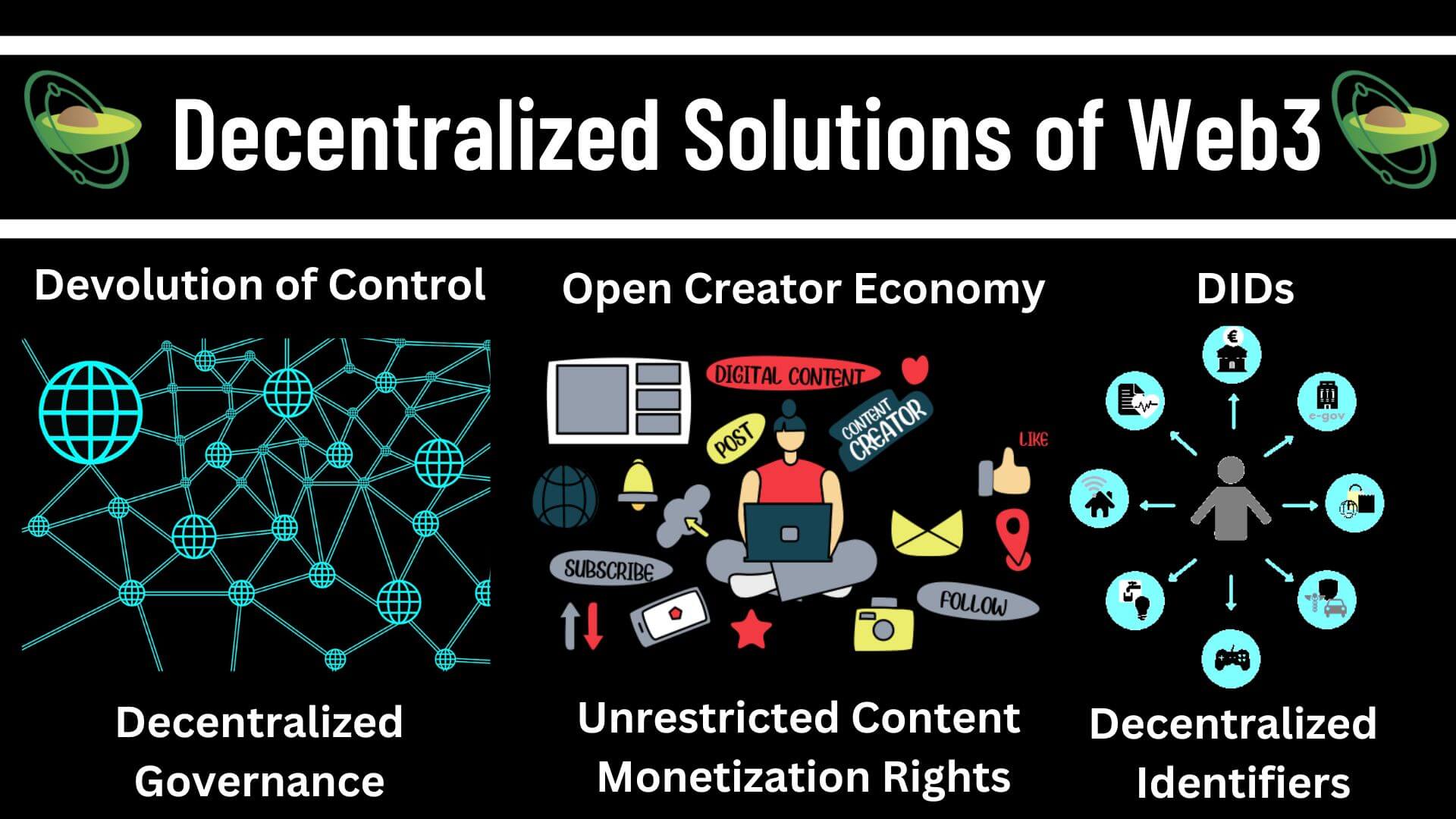
The first evolutionary stage of the Internet, the World Wide Web (WWW), started around the early 1990s in the guise of Web1. The hallmark of Web1, referred to as the read-only web or Hypertext Web, is its simple interface through static web pages. Data were retrieved from the file systems of servers and displayed through browsers such as Netscape Navigator, which in many ways is synonymous with Web1. In the mid-2000s, a paradigmatic shift took place when static web pages were replaced with interactive pages and user-generated content on social platforms. With these features, Web2 has dawned on the Internet.
Referred to as the read-write web or Social Web, Web2 entailed social connectivity and interactivity as well as the propagation and distribution of user-generated content (UGC). The fast-rising global rates of household internet connections and mobile device penetration allowed the seamless sharing of UGC. Both these factors paved the way for the rise of Web2-based social media platforms such as Facebook, Instagram, TikTok, Twitter, Uber, WhatsApp, and YouTube.
Web3 is set to take the form of the read-write-own web or Semantic Web. According to the standards set by the World Wide Web Consortium (W3C), the goal of Web3 is "to make Internet data machine-readable". Regarding its structure, Sir Tim Berners-Lee, who invented the WWW, conceptualized Web3 based on two key features, notably decentralization and bottom-up design. The advent of blockchain meant that the time had come for Berners-Lee's vision of Web3 to turn into reality.
(2) Systemic Issues of Web2The centralized nature of Web2 results in users being monetized as products under the pretext of “free” services. The primary systemic issues of the second generation of the Internet are mainly due to its top-down structure, use of walled gardens and lack of privacy protection.
 Systemic Issues of Web2 (Source: Avocado DAO)
Systemic Issues of Web2 (Source: Avocado DAO)
The top-down structure of Web2 is such that control over the means of production of digital goods and services is reposed in the hands of a select few private entities, notably the proverbial Big Five Tech Giants of Alphabet (Google), Amazon, Apple, Meta (Facebook), and Microsoft. These entities, which stand at the top of the hierarchy in the digital economy, can dictate the terms and conditions of their goods and services offered to consumers on a take-it-or-leave-it basis. This results in issues such as unfair censorship in the social media domain, which restricts the freedom of thought and rights to free speech of users.
(b) Walled GardensThe framework of Web2’s digital economy is devised based on the walled garden concept. In simple terms, the walled garden concept of Web2’s digital economy is rooted in the drive to retain dominant market positions. A case in point is that Apple once shut down Animoca Brands’ co-founder Yat Siu’s Web2 game applications due to the immense success of the applications. The shutting down of Yat Siu’s Web2 game applications is a classic example of the abuse of dominant market position to retain the status quo. The common elements of walled gardens include,
(i) a data platform for the collection and storage of user data,
(ii) an advertisement platform to facilitate the purchase of ads in an automated manner, and
(iii) a data optimization system to extract data from the data platform to be used for the running of personalized ads.
For Google, its data platform is its network of services, notably its Search and Workspace suite of offerings. Google’s data optimization system is deployed through its advertisement platform in the form of its AdSense. As for Meta, its data platform would be its services offerings such as Facebook, Instagram, and WhatsApp, whereas the deployment of its data optimization system is through its advertisement platform in the form of Facebook Showcase. For this reason, Facebook and its fellow Big Five Tech Giant, Microsoft, have been referred to by Yat Siu as “digital dictatorships”.
The top-heavy regime of Web2 platforms is reflected in the restrictions on the use of their content. Whether its a song bought from iTunes, an ebook purchased from Amazon, or a movie downloaded from the Google Play Store, these digital products are merely leased to the users. In other words, the users merely acquire leasing rights instead of ownership rights in these digital products. The absence of ownership rights to the “purchased” digital products is why sharing these products with third parties is prohibited.
(c) Privacy BreachesWith the global Internet penetration rate at 62.5% as of 2022, there are 4.95 billion Internet users worldwide. The centralized nature of Web2 means that the personal data of these users are stored in centralized repositories, which are controlled by digital content platforms. Besides the risks of hacking, there are the risks of misuse of personal information by the data controllers, notably Web2 platforms.
Cases in point are the string of hefty fines imposed by European regulators for violations of the General Data Protection Regulation (GDPR). Among the notable Web2 platforms which have been hit with fines for breaches of the GDPR are:
(i) Amazon (USD887 million, 2021) - For an undisclosed breach of the GDPR,
(ii) Meta (USD410 million, 2023) - For running behavioral ads under the pretext of contractual necessity,
(iii) WhatsApp (USD267 million, 2021) - For not properly explaining what amount to “legitimate interests” in its privacy policy, and
(iv) Google (USD102 million, 2022) - For making it difficult for YouTube users to refuse consent to cookies
As the saying goes, "if it ain't broke, don't fix it". In the context of Web2, however, some parts are broken and require some fixing. Web2’s authoritarian model of governance stems from its top-down structure. Besides this, the other issues of Web2 are its profit-oriented monetization models and privacy breaches. These are just some of the significant systemic issues of the second generation of the Internet. Web3, with its decentralized solutions, could help repair the “broken” Internet by fixing the systemic issues of Web2.
(3) Decentralized Solutions of Web3Web3 refers to the third generation of community-centric Internet built on decentralized web technologies. With the advent of blockchain, Web3 has emerged as a plausible reality. The close relationship between Web3 and blockchain is such that Web3 has been described as "a decentralized Internet built on an open blockchain network". The key function of blockchain in relation to Web3 is through nodes. In simple terms, nodes of a blockchain network in the Web3 ecosystem helps maintains the security and integrity of transactions. This is done through the broadcasting of transactions to all the nodes of the network. The nodes then validate the transactions, thereby mitigating the risks of fraud and inaccuracies.
As in explain in Part 1 of the Web3 Beginner Course, nodes are computers or other devices that are connected to a blockchain network and help validate transactions on the network. The higher the number of nodes on a blockchain network, the more secure the network will be. This is because the difficulty level to take control of a blockchain network or manipulate the information increases in tandem with the number of nodes on the network. Collectively, the decentralized features of blockchain network paves the way for an open creator economy and improves the systemic security of Web3 through the use of decentralized identifiers (DIDs).
 Decentralized Solutions of Web3 (Source: Avocado DAO)
Decentralized Solutions of Web3 (Source: Avocado DAO)
Web3 as the decentralized Internet would be built under a bottom-up structure. In this manner, the decision-making process concerning the administration and management of the operations of Web3 networks would be undertaken collectively by members of the respective communities. The agreement of the majority of community members to decisions made concerning the operations of a Web3 network is warranted by the use of the decentralized autonomous organization (DAO) framework.
For example, Ethereum decentralized governance is such that no single party owns or controls the Ethereum protocol. Instead, anyone in the Ethreum community can put forth Ethereum Improvement Proposals (EIPs). If an EIP garners sufficient support from members of the Ethereum community, it would be forwarded to the protocol developers of the network. If the EIP is accepted by these developers, it would be iterated into a final proposal before it is tested, implemented and scheduled for the next network upgrade.
(b) Open Creator EconomyWeb3 embodies the concept of an open creator economy, which entails creating and trading digital content with minimal restrictions and limitations. In contrast with Web2’s walled gardens, Web3’s open creator economy would grant full ownership rights to digital content creators to their creations. This is done through the use of non-fungible tokens (NFTs) as instruments for storing these rights. From a financial perspective, this enables Web3 digital content creators to have unrestricted rights to monetize their creations.
Under the framework of Web3’s open creator economy, creators can share the ownership rights to their creations with their fans without going through any third party. Removing third-party intermediaries would bring about cost savings for creators and consumers, as there would be no need to pay fees to any middleman. Additionally, reducing the number of transactions in the process chain for transferring ownership rights to creators' creations to their fans would also result in time savings. On top that, the removal of intermediating Web2 platforms would allow creators to break free from the restrictive algorithms of Big Five Tech Giants such as YouTube.
(c) Decentralized Identifiers (DIDs)Web3 would bring to life the concept of self-sovereign identity (SSI). In essence, SSI provides that users should fully control the personal information underlying their digital identities. The concept of SSI is a welcome change from the prevalent privacy breaches involving Web2-based digital services providers, particularly social media platforms. In terms of its implementation, Web3 would bring to life the concept of SSI through the use of decentralized identifiers (DIDs), defined as “a new type of identifier that enables verifiable, decentralized digital identity”.
In simple terms, DIDs enable the verification of the digital identities of Web3 users to be done without the need to involve any centralized entity. The dispensation of the involvement of centralized entities significantly reduces the risks of privacy breaches due to the absence of the need for disclosure, processing, and storage of personal data by such entities.
(4) ConclusionWith decentralization as its central tenet, Web3 would be restoring personal autonomy for users and transferring financial control to the hands of creators. Little wonder Web3 has emerged in recent times as a new iteration of the Internet that could help address the systemic issues of Web2. It's about time that we establish a connection with Web3.
Test what you've learnt from this article at our Questing Portal.
Once we have connected with Web3, we would need to learn more about the blockchain features of Web3 that makes it the decentralized Internet. We would be discussing about this in our next course, Blockchain as the Building Block of Web3.